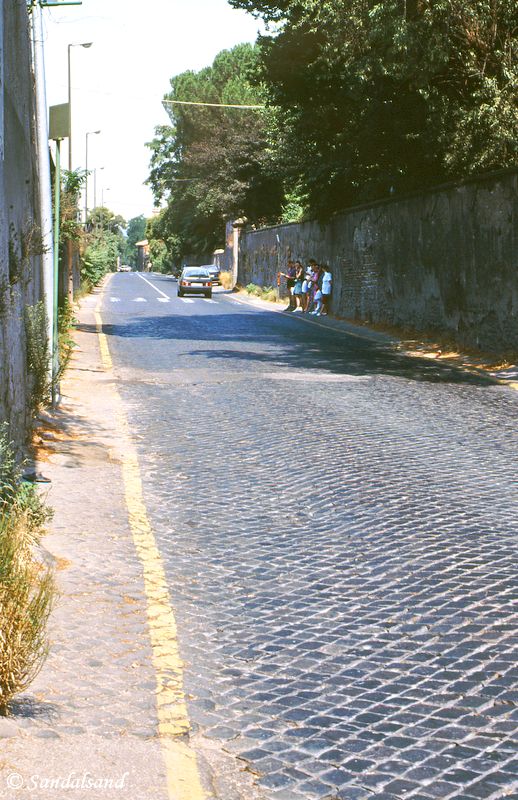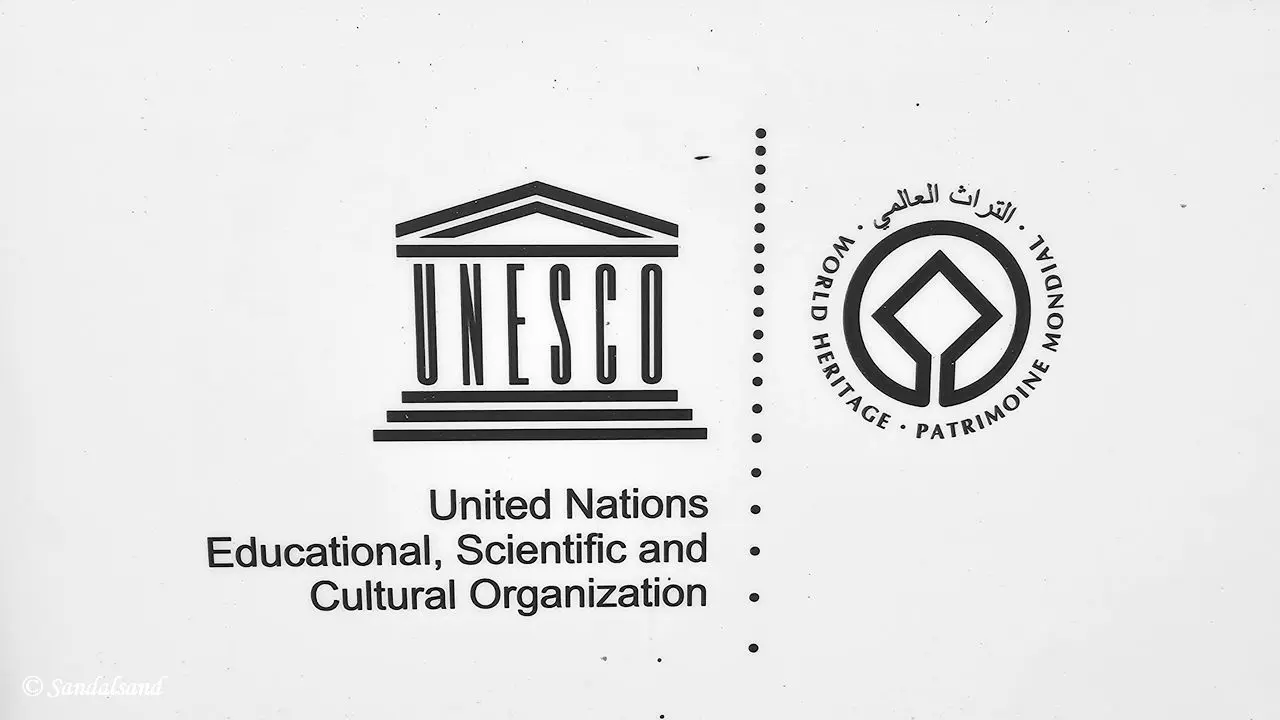UNESCO’s World Heritage Committee announced 24 new World Heritage Sites in 2024. The List now includes 1223 sites of a cultural, natural or mixed character.
Seek more information about the work of the Committee on the WHC website. Read Sandalsand’s main page about World Heritage Sites and perhaps also the task of visiting the ever-growing number of new sites. Sandalsand has visited three of the 24 new sites, as illustrated with images and links in the text.
Also, read the articles about the new entries in 2022/23, 2021, 2019 and 2018. Because of the pandemic there were no additions in 2020.
Important milestones
The 46th session of the World Heritage Committee concluded in New Delhi, India, with the inscription of 24 new cultural and natural properties on UNESCO’s World Heritage List. The session marked Nauru’s ratification of the World Heritage Convention, making it the 196th State Party.
The new inscriptions include 19 cultural properties, 4 natural properties, 1 mixed site, and 2 major extensions, bringing the total number of World Heritage sites to 1,223 across 168 countries. The Committee also reviewed the conservation status of 123 existing properties.
Additional funds of $235,520 were allocated to Colombia, Mauritius, Laos, and Tanzania for conservation projects. This is part of a broader effort, with 22 International Assistance requests approved this year, totalling $695,201.
The next session will be held in Sofia, Bulgaria, in summer 2025. The Committee emphasised the protection of threatened sites, inscribing the Monastery of Saint Hilarion/Tell Umm Amer in Palestine on both the World Heritage List and the List of World Heritage in Danger. The importance of involving local communities in heritage protection was reiterated, with new sites inscribed that highlight this commitment.
Five new African sites were added to the list, and Senegal’s Niokolo Koba National Park was removed from the List of World Heritage in Danger due to successful conservation efforts. Kenya announced plans to host a conference on African heritage in 2025.
The session highlighted the increasing universality of the World Heritage Convention, particularly noting the vulnerability of small island states to climate change.
A list of new World Heritage Sites 2024
What follows is a list of all new World Heritage Sites 2024 with short resumes of each one. Look up pictures and more information on UNESCO’s website.

Cultural properties
The new World Heritage Sites of 2024 include 19 cultural sites all over the world.
- Beijing Central Axis, China: This area showcases the ideal urban planning of ancient Chinese capitals, featuring palaces, gardens, and ceremonial buildings dating back to the Yuan Dynasty.
- Brâncusi Monumental Ensemble, Romania: Created by sculptor Constantin Brâncusi, this site commemorates WWI heroes with abstract sculptures in a landscape setting.
- Cultural Landscape of Kenozero Lake, Russia: This area reflects the merger of Finno-Ugric and Slavic cultures with traditional wooden architecture and communal agricultural practices.
- Frontiers of the Roman Empire – Dacia, Romania: This site includes Roman fortifications and infrastructure from the Dacian province, highlighting Roman military and administrative prowess.
- Hegmataneh, Iran: An ancient city with evidence of continuous habitation from the Medes civilization to the Sasanian Empire.
- Nelson Mandela Legacy Sites, South Africa: These sites commemorate the struggle against apartheid and Mandela’s influence on reconciliation and human rights.

- Melka Kunture and Balchit, Ethiopia: Prehistoric sites with evidence of early hominin occupation and tool use spanning over two million years.
- Moidams – the Mound-Burial System of the Ahom Dynasty, India: Royal necropolis with burial mounds, reflecting Tai-Ahom rituals and cultural heritage.
- Phu Phrabat, Thailand: Illustrates the Sima stone tradition of the Dvaravati period, with significant religious and cultural artifacts.
- Royal Court of Tiébélé, Burkina Faso: A traditional Kasena architectural complex showcasing social and cultural values.
More cultural sites
- Sado Island Gold Mines, Japan: Historical gold and silver mines with evidence of various traditional mining methods.
- Saint Hilarion Monastery/ Tell Umm Amer, Palestine: One of the earliest monastic sites, significant for its religious and cultural history.
- Schwerin Residence Ensemble, Germany: A 19th-century ducal capital with a blend of architectural styles reflecting historicist influences.
- Niah National Park’s Caves Complex, Malaysia: Caves with extensive records of human interaction with rainforests, providing insights into human development and adaptation.
- Cultural Landscape of Al-Faw Archaeological Area, Saudi Arabia: An ancient trade route hub with archaeological remains from different eras.
- Pleistocene Occupation Sites of South Africa: Sites providing evidence of early human behaviour, cognitive development, and adaptation.
- Historic Town and Archaeological Site of Gedi, Kenya: An important Swahili city with sophisticated architecture and water management systems.
- Umm Al-Jimal, Jordan: A rural settlement with Byzantine and Early Islamic architecture, representing local architectural styles and agricultural practices.
- Via Appia, Italy: An ancient Roman road illustrating Roman engineering and monumental structures.

New Inscribed Properties: Natural Properties
- Badain Jaran Desert, China: Known for its mega-dunes, inter-dunal lakes, and unique desert landscape features.
- Lençóis Maranhenses National Park, Brazil: Coastal dunes and lagoons offering significant biodiversity and stunning natural beauty.
- The Flow Country (United Kingdom). Situated in the Highland Region of Scotland, this blanket bog landscape has been accumulating peat for 9,000 years. It is crucial for carbon storage and supports a unique combination of bird species, making it an important research and educational resource.
- Vjetrenica Cave, Ravno (Bosnia and Herzegovina). This cave in the Dinaric mountains is a biodiversity hotspot for cave-dwelling fauna, including many endemic and globally threatened species. It contains significant relict species considered living fossils.
New Inscribed Properties: Mixed Properties
- Te Henua Enata – The Marquesas Islands (France). Located in the South Pacific, the Marquesas Islands exhibit exceptional human civilisation history from the 10th to the 19th centuries and are a biodiversity hotspot with unique marine and terrestrial ecosystems. The archipelago features remarkable landscapes, endemic flora, diverse seabird populations, and pristine marine environments, alongside archaeological sites with monumental structures and lithic sculptures.
Significant Modifications to the Boundaries
- Moravian Church Settlements (Denmark, Germany, UK, USA). The extension includes Herrnhut (Germany), Bethlehem (USA), and Gracehill (UK), joining Christiansfeld (Denmark). These settlements reflect the global network and architectural ideals of the Moravian Church. They are adapted to local contexts, and maintain active congregations that preserve Moravian heritage.
- Migratory Bird Sanctuaries along the Coast of Yellow Sea-Bohai Gulf of China (Phase II) (China). This extension supports vital habitats for migratory birds on the East Asian-Australasian Flyway. This is the largest intertidal wetland system in the world, crucial for millions of waterbirds across 25 countries.


